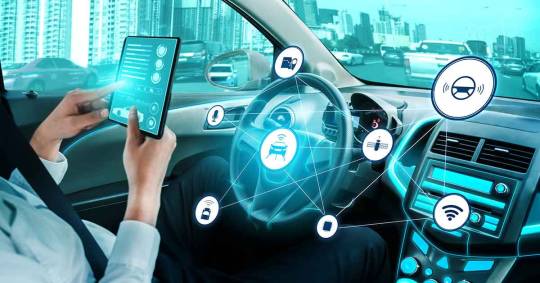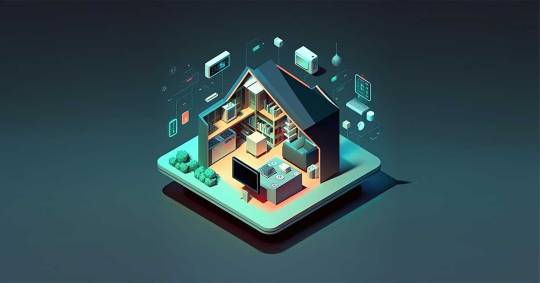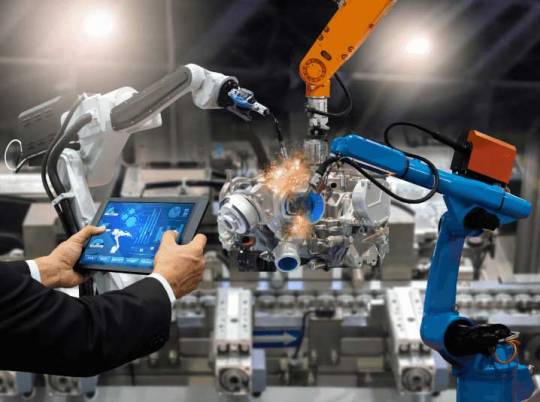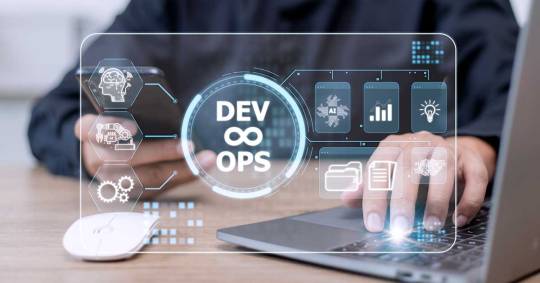Text
Smart Healthcare- A New Way for Intelligent Health Environment

In the era of rapid technological advancements, healthcare stands at the forefront of transformation. Integrating intelligent technologies is ushering in a new wave of innovation, paving the way for smart health solutions. This blog post will explore the paradigm shift towards competent healthcare and how it reshapes healthcare delivery.
As per the Market Insights Report, the Internet of Things (IoT) segment of the Smart Healthcare market reached USD 55.5 billion in 2019 and is anticipated to exhibit a compound annual growth rate (CAGR) of 20.8%, reaching USD 172.46 billion by 2025. The COVID-19 pandemic has accelerated the digital transformation of the healthcare industry, drawing attention to the robustness and capabilities of healthcare systems globally. In an increasingly digitized world, where technology and innovation influence every aspect of our lives, it is imperative to keep something as crucial as healthcare from falling behind. Integrating the Internet of Things (IoT), Artificial Intelligence Solutions, Big Data, and Cloud computing can potentially construct intelligent healthcare systems on a global scale.
Introduction to Smart Healthcare:
Smart healthcare leverages cutting-edge technologies such as artificial intelligence (AI), the Internet of Things (IoT), and data analytics to enhance the quality of healthcare services. From personalized patient care to efficient hospital management, smart healthcare is changing how we approach health.
Connected Health Devices:
The proliferation of connected health devices is a hallmark of smart healthcare. Wearable devices, smart sensors, and continuous monitoring tools enable real-time data collection, providing healthcare professionals with valuable insights into patients' health conditions. This facilitates proactive and personalized healthcare interventions.
Artificial Intelligence in Diagnostics:
AI is playing a crucial role in revolutionizing diagnostics. Machine learning algorithms analyze medical data to identify patterns and trends, aiding in early disease detection and accurate diagnosis. This speeds up the diagnostic process and improves the overall efficiency of healthcare services.
Telemedicine and Remote Patient Monitoring:
Smart healthcare facilitates remote patient monitoring through telemedicine platforms and wearable devices. Patients can receive medical consultations, monitor vital signs, and manage chronic conditions from the comfort of their homes. This improves patient convenience and reduces the burden on healthcare facilities.
IoT-Enabled Healthcare Infrastructure:
The Internet of Things (IoT) is transforming healthcare infrastructure. IoT-enabled devices and systems streamline hospital operations, from inventory management to patient flow optimization. This interconnected ecosystem enhances overall efficiency, reduces costs, and ensures a seamless healthcare experience.
Enhanced Data Security and Privacy:
With the increased reliance on digital health data, smart healthcare prioritizes robust cybersecurity measures. Advanced encryption, secure communication channels, and compliance with data protection regulations ensure that patient information remains confidential and secure.
Personalized Healthcare Plans:
Smart healthcare enables the development of personalized healthcare plans tailored to individual patient needs. By analyzing patient data and medical history, healthcare providers can offer customized treatment plans, resulting in more effective and patient-centric care.
Future Trends and Challenges:
As smart healthcare continues to evolve, emerging trends such as blockchain in healthcare, 5G connectivity, and augmented reality (AR) applications are likely to shape the future of healthcare delivery. However, challenges such as data interoperability, ethical considerations, and the need for standardized regulations must be addressed to unlock the full potential of smart healthcare.
Conclusion:
Smart healthcare represents a paradigm shift in the way we approach healthcare services. With technological innovations driving this transformation, the future promises more efficient, accessible, and patient-centric healthcare. As innovative healthcare solutions evolve, the synergy between technology and healthcare is poised to redefine the standards of intelligent health environments.
0 notes
Text
How is IoT Solution shaping Automotive Innovation?

Amidst a rapidly shifting landscape, the automotive realm has firmly embedded itself within the fabric of economic realities. Central to this evolution is exploring how innovative technologies within this industry can serve as a cornerstone for safety and comfort in people's lives. However, this metamorphosis isn't solely about embracing intelligence; it's about orchestrating innovative solutions that trim costs, amplify productivity, and elevate the customer experience.
Nestled within this wave of transformation lies the disruptive force of the Internet of Things (IoT), reshaping traditional operational paradigms across industries, particularly within automotive domains. Its relentless progression fuels the creation of pioneering solutions, opening new vistas for industry frontrunners enabling them to stay intricately connected within the dynamic ecosystem.
Use Cases
As technology develops, more sophisticated automotive use cases will appear that fundamentally alter how people interact with cars today. Let's examine many application scenarios in which the automobile sector might benefit from the Internet of Things (IoT):
Connected Car Services:
Telematics and Fleet Management: IoT enables real-time vehicle location, performance, and driver behavior monitoring for optimized fleet management.
Remote Diagnostics: Continuous data collection allows for remote diagnosis of vehicle issues, enabling predictive maintenance and reducing downtime.
Enhanced Driver Experience:
Personalized Infotainment: IoT facilitates customized content delivery based on individual preferences, enhancing the in-car entertainment experience.
Smart Navigation: Real-time traffic updates and route optimization based on IoT-generated data for efficient navigation.
Safety and Security Features:
Collision Avoidance Systems: IoT sensors detect potential collisions and trigger automatic braking or warnings to prevent accidents.
Vehicle Security: Connected systems enable remote tracking, immobilization, and recovery of stolen vehicles.
Predictive Maintenance:
Health Monitoring: IoT sensors monitor vehicle components and systems, predicting maintenance needs before issues arise reducing breakdowns and repair costs.
Software Updates: Over-the-air updates keep vehicles up-to-date with the latest software, enhancing performance and security.
Autonomous Driving:
Sensor Fusion: Integration of IoT sensors with cameras, radar, and lidar for comprehensive data collection, crucial for autonomous vehicle functionality.
V2X Communication: Vehicle-to-everything communication using IoT facilitates interaction with infrastructure, pedestrians, and other vehicles, which is vital for autonomous driving safety.
Environmental Sustainability:
Efficient Energy Management: IoT enables optimization of energy consumption in electric vehicles, extending the range and improving efficiency.
Emission Monitoring: Sensors monitor emissions in real time, aiding in compliance with environmental regulations and reducing ecological impact.
Supply Chain Optimization:
Inventory Management: IoT-based systems monitor inventory levels in manufacturing, ensuring streamlined production and reduced downtime.
Logistics and Distribution: Real-time tracking and route optimization for efficient delivery and reduced fuel consumption.
The fusion of IoT with automotive technologies is rapidly reshaping how vehicles operate, communicate, and serve consumers. As technology continues to evolve, the scope for innovative IoT applications in the automotive sector will expand, fostering safer, more efficient, and interconnected transportation ecosystems.

Advantages of IoT in the Automotive Sector:
IoT offers numerous benefits within the automotive market, fundamentally transforming the industry:
1. Enhanced Safety:
Accident Prevention
IoT-powered sensors detect potential collisions, enabling proactive measures such as automatic braking or warnings to reduce accident rates.
Emergency Response
Connected systems facilitate swift emergency notifications and responses, improving overall road safety.
2. Improved Vehicle Maintenance:
Predictive Maintenance
Continuous monitoring of vehicle components allows for predictive maintenance, reducing unexpected breakdowns and minimizing repair costs.
Software Updates
Over-the-air updates ensure vehicles remain up-to-date with the latest software, improving performance and security.
3. Increased Efficiency
Optimized Operations
IoT-driven data analysis enhances operational efficiency in fleet management, supply chain, and manufacturing, reducing downtime and optimizing resources.
Fuel Efficiency
IoT sensors aid in optimizing fuel consumption patterns, contributing to better fuel efficiency and reduced environmental impact.
4. Personalized Customer Experience:
Customization:
IoT Solution enables personalized in-car experiences, offering tailored infotainment options and driving settings based on individual preferences.
Enhanced Connectivity:
Connectivity features improve interaction between vehicles and external systems, providing seamless experiences for users.
5. Autonomous Driving Advancements:
Safety Features:
IoT technology supports autonomous driving functionalities through advanced sensor fusion and vehicle-to-everything (V2X) communication, enhancing road safety.
Improved Traffic Flow:
IoT-enabled vehicles communicate with infrastructure and other vehicles, optimizing traffic flow and reducing congestion.
6. Cost Savings:
Reduced Maintenance Costs:
Predictive maintenance and remote diagnostics minimize vehicle downtime and lower maintenance expenses.
Efficiency Gains:
Streamlined operations and optimized processes lead to cost reductions across the automotive value chain.
7. Environmental Impact:
Emission Reduction:
IoT aids in monitoring emissions in real-time, assisting in compliance with environmental regulations and fostering more sustainable practices.
Promoting Electric Vehicles:
IoT technology optimizes energy consumption in electric vehicles, extending their range and encouraging eco-friendly transportation alternatives.
Overall, integrating IoT solutions in the automotive market enhances safety, efficiency, and customer experience and drives innovation and sustainability, shaping the future of transportation.
Bottom Line
TEKSUN- Embracing Digital Transformation: Next-Generation IoT, AI, and IT Solutions helps to develop future-proof, secure automotive solutions, enhancing their competitive advantage in today’s market. We specialize in end-to-end hardware and software design services aligned with industry standards, cloud integration, and manufacturing services, all consolidated for seamless development of connected automotive solutions.
#AutomotiveInnovation#TechTransformation#SafetyFirst#ComfortInDriving#EconomicRealities#InnovativeSolutions#IntelligentAutomotive
0 notes
Text
The world of technology is growing constantly. What was formerly popular and in high demand may need to be quickly updated. This is a fact, especially in the case of big data. Browse @ [https://teksun.com/](https://teksun.com/).
#Technology Evolution#Dynamic Tech Landscape#Big Data Trends#Tech Updates#Innovation Technology#High Demand Technologies#Tech Industry Dynamics#Big Data Solutions#Cutting-edge Technology#Data Analytics Evolution
0 notes
Text
How Matter is Reshaping the Future of IoT Technology?

In recent years, the Internet of Things (IoT) has revolutionized the way we interact with our surroundings. From smart homes to industrial automation, IoT technology has permeated various aspects of our lives. Now, a new standard called "Matter" is poised to take IoT to the next level, promising a more seamless and interoperable future. In this blog post, we'll explore how Matter is reshaping the landscape of IoT technology and what it means for the future.
The Genesis of Matter
Matter, formerly known as Project CHIP (Connected Home over IP), is an open-source connectivity standard developed by major players in the tech industry, including Apple, Google, Amazon, and the Connectivity Standards Alliance (CSA). This collaboration aims to create a unified standard for smart home devices, enabling them to work together effortlessly, regardless of the manufacturer.
Interoperability: A Game-Changer
One of the key ways Matter is transforming the IoT landscape is through its emphasis on interoperability. In the past, compatibility issues between different devices from various manufacturers have been a significant hurdle for consumers. Matter addresses this problem by providing a standardized communication protocol, ensuring that devices can seamlessly communicate with one another, regardless of their origin.
Enhanced Security and Privacy
Security is a paramount concern in IoT technology. Matter incorporates robust security features to protect user data and privacy. With end-to-end encryption and secure authentication mechanisms, Matter-enabled devices offer a higher level of security, giving users peace of mind when integrating them into their homes.
Simplified Setup and Configuration
Setting up smart devices has been a pain point for many users in the past. Matter aims to streamline this process by providing a unified setup experience. With easy-to-follow instructions and a standardized onboarding process, users can get their devices up and running quickly and hassle-free.

A Growing Ecosystem
The adoption of Matter is gaining momentum, with an increasing number of manufacturers pledging support for this standard. This growing ecosystem means that consumers will have a wider range of options when it comes to choosing compatible devices, further enhancing the flexibility and customization of their smart homes.
The Future of IoT with Matter
As Matter continues to gain traction, we can expect to see a surge in innovation within the IoT space. Developers will have a standardized platform to build upon, leading to a proliferation of new and exciting applications for smart devices. This standardization also paves the way for broader adoption in various industries, including healthcare, industrial automation, and more.
Conclusion:
Matter represents a significant milestone in the evolution of IoT technology. With its focus on interoperability, security, and ease of use, it is poised to reshape the way we interact with smart devices in our homes and beyond. As the Matter ecosystem continues to grow, we can look forward to a future where IoT technology seamlessly integrates into our lives, making them more convenient, efficient, and connected than ever before.
0 notes
Text
Surprising AI data that show how these technologies will affect many facets of our lives in the coming years are presented. To know more about browse: https://teksun.com/ Contact us ID: [email protected]
#Artificial intelligence#Machine learning#Deep learning#Natural language processing#Automation#Cognitive computing#Smart technologies#Internet of Things (IoT)#Digital Transformation#Product engineering services
0 notes
Text
Artificial Intelligence and Cognitive Intelligence are poised to overhaul marketing personalization. To know more about browse: https://teksun.com/ Contact us ID: [email protected]
0 notes
Text

Teksun is a leading Robotic Process Automation Development service provider enabling businesses to automate business processes effectively, at scale. To know more, visit @ https://teksun.com
#robotic process automation services#robotic process automation companies#rpa automation#product engineering company#product engineering services#product engineering solutions#IoT and AI Solutions Company#technology solution partner
0 notes
Text

Teksun's cutting-edge solution for IoT & AI EDGE Gateway that communicate with the different smart devices. To know more, visit @ https://teksun.com
0 notes
Text
Empower drivers and enhance safety on the roads with Teksun Inc and Napino Digital Solutions (Electronics Design & Manufacturing) joint webinar! Dive into the world of cutting-edge ADAS and DMS technologies, revolutionizing the driving experience. To know more: https://lnkd.in/dyWCPhGp
#ADAS#DMS#Road Safety#Automotive Technology#Webinar#Driver Monitoring Systems#Automotive Industry#Innovative Future
0 notes
Text
Empowering Drivers, Ensuring Safety: Unraveling the World of ADAS and DMS with Teksun and Napino

In an era of rapid technological advancement, the automotive industry is undergoing a revolutionary transformation. The integration of cutting-edge technologies like Advanced Driver Assistance Systems (ADAS) and Driver Monitoring Systems (DMS) is reshaping the way we approach road safety. Teksun and Napino, two distinguished leaders in the automotive technology space, are joining forces to shed light on the future of safe driving. Join us for an insightful webinar that promises to be an eye-opener for anyone passionate about road safety and the future of transportation.
Event Details:
Date: October 18th
Time: 10:00 AM PST / 10:30 PM IST
Register Now: Click here
Speakers:
Mohit Agrawal, Head of Technology at Teksun Inc., boasts an extensive background spanning over 11 years. His expertise lies in developing groundbreaking solutions within diverse domains such as Defence, Satellite Communication, Automotive, and Agriculture. Presently, Mr. Aggrawal is directing his attention toward the realm of consumer electronics, with a specific emphasis on Medical, Virtual Assistance, Edge AI, Security, and Surveillance.
Aman Jain, Head of Sales, at Napino Digital Solutions has made significant strides in the IoT Industry 4.0, Connected Cars, Vehicle Telematics, and Electronics Design & Manufacturing. A seasoned Technical Sales Professional, His expertise in electronics manufacturing has been instrumental in bridging innovative technology with market demands. An alumnus of Indian Institute of Management, Kozhikode with a specialization in Marketing & Strategy and he also boasts Btech in Electronics and Communications from Rajasthan Technical University. His formidable skills in Sales Negotiation further cement his industry reputation.
Why Attend:
Gain valuable insights into the world of ADAS and DMS from industry experts.
Understand how these technologies are revolutionizing road safety.
Get a glimpse into the future of automotive technology and safe driving.
Engage in an interactive Q&A session to have your queries addressed.
Who Should Attend:
Automotive enthusiasts and professionals
Engineers and technologists in the automotive industry
Road safety advocates and policymakers
Anyone interested in the future of safe driving
Conclusion:
Don't miss out on this enlightening event that promises to unravel the potential of Advanced Driver Assistance Systems (ADAS) and Driver Monitoring Systems (DMS) in reshaping the landscape of road safety.
Let's pave the way for a safer and more innovative future on the roads!
Meta Description
Don't miss this event on ADAS and DMS shaping road safety. Register today!
0 notes
Text
Optimize the data & business insights acquired from your connected devices by swiftly expanding the apps with Teksun’s IoT Cloud Integration. Connect with us today with these services and all programmable modules at www.teksun.com
#Cloud Integration#IoT Devices#Data Management#Real-time Data#Cloud Services Data Analytics#Device Connectivity#IoT Protocols#Edge Computing#IoT Security
0 notes
Text
How are VOIP and AI Reshaping the Communication Landscape?

Voice Over Internet Protocol (VoIP) and artificial intelligence (AI) stand out as rapidly evolving technologies. AI has fundamentally transformed various dimensions of both business processes and everyday existence. Concurrently, the VOIP AI solution is fundamentally altering the landscape of communication.
These two innovations have unmistakably demonstrated their potential to redefine conventional business models and market structures. Consequently, amalgamating the prowess of AI with the benefits of VoIP emerges as a perfectly harmonized union, greatly facilitating seamless and cost-effective communication across all fronts.
Given the remarkable capabilities inherent in these technologies, it is only logical to anticipate a multitude of forthcoming transformations. In this regard, let's delve into the profound ways through which VoIP and AI are currently reshaping the realm of communication.
Quick Synopsis of VoIP (Voice over Internet Protocol) and AI (Artificial Intelligence)
Voice Over Internet Protocol (VoIP) refers to an internet-based telephony technology or a virtual phone system that empowers individuals to initiate and receive voice calls using the Internet.
To delve into further detail, when utilizing VoIP, individuals are not obligated to possess a telephone line, physical infrastructure, or specialized hardware. Instead, users can engage in call activities regardless of their geographical location, as long as they have a device compatible with internet connectivity and access to a reliable internet connection.
VoIP can be regarded as the forthcoming frontier of the telephony industry, presenting a myriad of exceptional advantages. These encompass but are not limited to scalability, flexibility, mobility, substantial cost savings, and a host of other favorable attributes.
Conversely, Artificial Intelligence (AI) pertains to a sophisticated array of procedures employing computer systems and machine learning to emulate human abilities within machines, robots, and various devices. In simpler terms, AI can be delineated as a procedure encompassing the development of computer programs capable of executing human tasks autonomously, devoid of any direct human involvement.
AI encompasses a spectrum of elements, including but not limited to natural language processing (NLP), which enables comprehension and interaction with human language; machine learning, the process of learning from past interactions or experiences; pattern recognition; problem-solving; and the ability to make informed decisions.
Significance of Communication in the Contemporary Era
Communication has played a pivotal role in human civilization from its inception. Its significance continues to escalate, encompassing various aspects such as connectivity and information dissemination. Today, communication has evolved into a critical component of our world. Let's delve into a few advantages it offers:
Data and Information Exchange: Communication is the conduit for sharing data and information. It stands as a fundamental avenue through which concepts, perspectives, viewpoints, and a diverse array of updates are exchanged among individuals.
Worldwide Reach: The contemporary era is characterized by globalization and digital transformation. Communication is pivotal in driving global integration by dismantling geographical constraints and facilitating the seamless exchange of information across diverse locations, spanning various cities and nations.
Personal and Professional Bonds: Communication is critical in nurturing healthy personal and professional connections. Be it in the context of formal business associations or within the realm of family, friendships, and other affiliations, maintaining open lines of communication holds paramount significance.
Business Realm: Communication holds immense significance within the business domain. Furthermore, given the prevailing market dynamics and competitive landscape, communication's efficacy is an indispensable component of achieving prosperity in any business endeavor.
Communication is needed in daily operations, marketing, sales, and every other function within the business.
Innovation and Collaboration: Furthermore, innovation and technological advancements are being conducted at a rate that has never been seen before.
In such a time of technological revolution, communication is an integral part of innovation and collaboration. Innovation requires connection, association, teamwork, and information sharing, which can only be possible through efficient communication.
Furthermore, communication is essential in various other sectors, including education, learning, healthcare, medicine, social change, cultural exchange, decision-making, problem-solving, and many more.

Revolutionizing Communication through VoIP
Voice Over Internet Protocol (VoIP) is a groundbreaking Internet telephony innovation, serving as a virtual phone system that empowers individuals to engage in voice conversations and exchange multimedia using the Internet and Internet-enabled devices such as smartphones, tablets, laptops, and desktop computers.
Positioned as the vanguard of telephonic evolution, VoIP has significantly transformed communication. The subsequent discussion outlines how VoIP has brought about this revolutionary change and the advantages it brings.
Economical Benefits
Conventional telephone systems rely on tangible phone lines, resulting in supplementary charges for call usage. Similarly, the established telephony setup mandates physical components and hardware installations, including private branch exchanges (PBX), which can impose substantial financial burdens on businesses.
In contrast, Voice Over Internet Protocol (VoIP) facilitates voice communication, eliminating the necessity for physical lines, hardware outlay, and infrastructure investments. This capability translates into substantial cost savings for enterprises. Furthermore, adopting a virtual telephony system substantially curtails long-distance and Internet expenses by eliminating supplemental outlays.
Flexibility in Expansion
Expanding the conventional telephone system is intricate, time-intensive, demanding tasks like rewiring, hardware integration, and configuration. In contrast, enterprises can effortlessly adjust user counts and plans according to their necessities and prerequisites with VoIP, eliminating complexities and delays.
Adaptability
The dynamics of the business landscape and market configuration have undergone an unparalleled transformation, giving birth to a contemporary cadre of remote and mobile workers. Integrating such a workforce into a traditional phone system is unfeasible.
In such scenarios, enterprises can embrace a virtual phone system, empowering employees to engage in calls from any location. All that's required from employees is a functional device and a stable internet connection.
Enhanced Capabilities
Within a virtual phone system, your options extend beyond essential call functions. VoIP encompasses a range of sophisticated attributes. For instance, you can leverage call routing, forwarding, monitoring, recording, video calling, conference calling, interactive voice response (IVR), and more.
Furthermore, certain providers go the extra mile by introducing features like unified communications and the transcription of voicemail messages to email.
Seamless Incorporation
Finally, it's important to note that VoIP enables you to seamlessly integrate your communication processes with many tools, including Customer Relationship Management (CRM) systems and helpdesk platforms. This integration elevates and optimizes business communication within the organization and with external stakeholders.
The Convergence of VoIP and AI
The fusion of VoIP technologies with AI has the potential to enhance seamless communication, elevate user experiences, and elevate the quality of services. For instance, VoIP's capability to facilitate voice communication via the Internet can be intelligently managed and automated through the assistance of AI. AI, in turn, can process, decipher, and harness the data generated by VoIP systems to introduce highly advanced functionalities.
The harmonious interplay resulting from the amalgamation of these two technologies refines communication processes and enhances interactions between individuals and businesses. Presented below are several practical applications that emerge from the symbiosis between VoIP communication and AI.
Intelligent Call Routing
Through the amalgamation of AI and VoIP integration, enterprises can execute intelligent call routing, guaranteeing the precise redirection of calls to the appropriate individual, department, or branch as the requirements dictate.
AI can delve into the database, assess the caller's preferences and context based on caller ID, and subsequently determine the optimal call routing. This results in reduced waiting time, smooth communication flow, and enhanced customer contentment.
Language Translation in Real Time
Voice over IP can transmit calls globally, harnessing AI-driven language translation to achieve immediate, real-time interpretation. The outcome is fluid interaction between individuals conversing in diverse languages, cultivating worldwide collaboration and mutual comprehension.
This attribute holds immense value for multinational enterprises catering to a diverse international clientele. Moreover, it presents the advantage of cost reduction, as the necessity for maintaining distinct human translation resources is alleviated.
AI-Enhanced Customer Assistance
Lastly, the convergence of AI and VoIP holds the potential to enhance customer support through AI-driven mechanisms. Chatbots and virtual assistants can seamlessly integrate into customer support systems built on VoIP technology.
Through AI-powered agents, customers can pose queries, obtain information, and even troubleshoot prevalent problems, ultimately augmenting the quality of customer service. This implementation ensures precision and an elevated standard of customer care.
The Convergence of VoIP and AI
The fusion of VoIP technologies with AI has the potential to enhance seamless communication, elevate user experiences, and elevate the quality of services. For instance, VoIP's capability to facilitate voice communication via the Internet can be intelligently managed and automated through the assistance of AI. AI, in turn, can process, decipher, and harness the data generated by VoIP systems to introduce highly advanced functionalities.
The harmonious interplay resulting from the amalgamation of these two technologies refines communication processes and enhances interactions between individuals and businesses. Presented below are several practical applications that emerge from the symbiosis between VoIP communication and AI.
Intelligent Call Routing
Through the amalgamation of AI and VoIP integration, enterprises can execute intelligent call routing, guaranteeing the precise redirection of calls to the appropriate individual, department, or branch as the requirements dictate.
AI can delve into the database, assess the caller's preferences and context based on caller ID, and subsequently determine the optimal call routing. This results in reduced waiting time, smooth communication flow, and enhanced customer contentment.
Language Translation in Real Time
Voice over IP can transmit calls globally, harnessing AI-driven language translation to achieve immediate, real-time interpretation. The outcome is fluid interaction between individuals conversing in diverse languages, cultivating worldwide collaboration and mutual comprehension.
This attribute holds immense value for multinational enterprises catering to a diverse international clientele. Moreover, it presents the advantage of cost reduction, as the necessity for maintaining distinct human translation resources is alleviated.
AI-Enhanced Customer Assistance
Lastly, the convergence of AI and VoIP holds the potential to enhance customer support through AI-driven mechanisms. Chatbots and virtual assistants can seamlessly integrate into customer support systems built on VoIP technology.
Through AI-powered agents, customers can pose queries, obtain information, and even troubleshoot prevalent problems, ultimately augmenting the quality of customer service. This implementation ensures precision and an elevated standard of customer care.
Final Thoughts
The amalgamation of VoIP and AI is revolutionizing communication for the positive. Teksun VOIP AI solution brings economic gains, adaptability, and scalability advantages, while AI introduces automation, sophisticated language processing, and virtual assistants.
This synergy is already reshaping the communication landscape, and as ongoing research and development continue, we can anticipate even more profound transformations in the days ahead.
Within this piece, we delve into the possibilities that hold VOIP AI Solutions and its far-reaching implications for the future of communication.
#VOIPAI#AICommunication#FutureOfCommunication#AIInnovation#VoiceOverIP#AIEnhancedVoice#CommunicationTech#VoIPTransformation#AIRevolution#TechInnovation
0 notes
Text
https://teksun.com/services/product-engineering/ai-ml/chatbots-conversational-ai/
Our AI Chatbot Development Services can be integrated across multiple platforms and decrease operating costs. Get a FREE consultation today. Connect with us today with these services and all programmable modules at www.teksun.com
#Chatbots#ConversationalAI#CustomerSupport#DigitalTransformation#AI#TechInnovation#CustomerEngagement#BusinessSolutions#FutureTech#AIChatbots
1 note
·
View note
Text
In this all-encompassing article, we unveil the transformative potential of big data in healthcare and how it reshapes healthcare delivery. To know more about browse: https://teksun.com/ Contact us ID: [email protected]
#BigDataInHealthcare#HealthcareTech#DataDrivenHealth#HealthcareInnovation#DigitalHealth#HealthcareTechnology
1 note
·
View note
Text
Teksun Inc is an ISO 9001:2015 certified IoT and AI Solutions Company specializing in Product Engineering Services supporting ODM & OEM for numerous B2B Applications & Use Cases. Connect with us today with these services and all programmable modules at www.teksun.com
#product engineering services#product engineering company#digital transformation#technology solution partner
1 note
·
View note
Text

Teksun Industrial IoT solution helps factories & process industries to boost overall equipment productivity and efficiency through the Connecting device. To know more, visit @ https://teksun.com
#iot solutions#Smart Logistics#Machine Monitoring#INDUSTRIAL IOT#product engineering company#product engineering services#product engineering solutions#IoT and AI Solutions Company#technology solution partner
1 note
·
View note
Text
The Importance of DevOps Services in Manufacturing

Technology has evolved rapidly, leading to significant changes.transformations worldwide, including in the manufacturing industry. With the need to enhance efficiency and productivity, modern manufacturing companies require advanced services. Through technological innovations such as automation, robotics, and software advancements, factories have operated more efficiently than ever before. This sector has experienced profound changes by integrating technologies like the Internet of Things, artificial intelligence, mixed reality, big data, and numerous other advanced tools.
The combination of these tools has given birth to what we now refer to as Industry 4.0. With a substantial amount of technology involved, companies require software to utilize these new found tools effectively.
This is precisely where DevOps plays a crucial role. DevOps has emerged as one of the most widely adopted methodologies in the technology sector, empowering organizations to swiftly and efficiently develop the required solutions. Through the implementation of DevOps, productivity experiences an upsurge as automation and monitoring are harnessed to guarantee peak performance standards. This empowers the manufacturing sector to eradicate expensive and time-intensive procedures, all the while staying in sync with the rapid and cutthroat contemporary landscape.
However, additional factors contribute to the significance of DevOps in the realm of Industry 4.0. Let's explore other reasons manufacturing companies should embrace DevOps during this era.
More Agility
DevOps Consulting Services companies to adapt and update software to meet evolving requirements swiftly. It offers advantages such as automated code testing, continuous integration, and seamless delivery. These benefits facilitate the rapid deployment of new software and products in manufacturing facilities, ensuring precise implementation and minimal downtime.
Better Efficiency
DevOps empowers the manufacturing industry by enhancing efficiency, responsiveness, and implementation time. Organizations can delegate server and technical requirements to development teams by utilizing DevOps, allowing administrators to concentrate on other core IT functions. This division of tasks enables swift completion of assignments and improved deployment times.
Automated Processes
By implementing an automated DevOps pipeline, businesses can automate the entire process of continuous integration, testing, and deployment while incorporating live monitoring of application performance. This automation allows businesses to scale their solutions while reducing complexity and costs. With DevOps integration, the operational aspects of IoT software are carefully considered, ensuring optimal efficiency of the devices.
Faster Time to Market
To stay ahead of the competition and deliver products and services to market promptly, manufacturing industries need to act swiftly before losing customer interest. DevOps allows manufacturing industries to outperform competitors and offer state-of-the-art solutions with utmost accuracy and precision.
Innovate
Implementing DevOps in manufacturing enables companies to emphasize production speed and enhance quality control. Furthermore, DevOps aids in problem troubleshooting, leading to improved run time, and provides support across all stages of the software development process.
How does DevOps contribute to accomplishing digital transformation?
Experts assert that DevOps and digital transformation are closely intertwined, complementing each other in various ways. DevOps is crucial in enabling product development and creating new revenue streams, making it difficult to separate the two concepts.
DevOps eliminates harmful silos within organizations, facilitating continuous innovation and fostering agile processes. These factors enable organizations to meet the ever-changing needs of consumers and drive frequent improvements in digital transformation.
Implementing DevOps methodology in industrial businesses allows all teams within the company to collaborate effectively, fostering innovation and optimizing production processes.
It is important to note that implementing DevOps is a process that takes time, and organizations should take time to adopt a DevOps mindset. It requires a comprehensive cultural shift that takes time. A recommended approach is to start small and gradually scale up by automating one process at a time while educating employees about DevOps's significance.
By embracing an agile approach, organizations can accomplish more within a limited time and effort. In summary, initiating the implementation of DevOps gradually allows organizations to witness the potential benefits and achievements it can bring.
How DevOps Fosters Digital Transformation?

Unifying individuals, procedures, and technology
DevOps enables organizations to expedite the delivery of new products to customers, empowering them to shape and transform the digital identity of these entities. DevOps harmonizes people, workflows, and technological advancements, aligning all three aspects toward interconnected business objectives.
Facilitating a self-directed trajectory toward enhanced solutions
DevOps enhances an organization's IT foundation to become more examinable, flexible, transparent, responsive, and readily available. This enhancement catalyzes digital transformation by enabling secure and substantial alterations to the evolving IT framework, subsequently fostering optimistic and dynamic enhancements to software applications and services. Furthermore, this positively influences operational teams, elevating various aspects and domains to amplify functionality.
DevOps lets continuous and regular innovation
The intricacies inherent in cloud computing and microservices operation are abundant. The likelihood of success increases with established, specialized, or collaborative processes bridging development and operational technology activities. DevOps principles and implementation serve as the catalysts that enable these transformative shifts within organizations.
Bottom Line
Embracing DevOps for achieving digital transformation is a challenging feat. However, with the guidance of Teksun's DevOps consulting services, the path to industrial digital transformation becomes more manageable. Our adept professionals assist in seamlessly integrating DevOps best practices, enabling individuals to harness this methodology's potential fully. Please act today by contacting us and tapping into our IIoT solutions, accelerating your journey toward digital transformation without unnecessary delays.
Uncover the significance of DevOps within manufacturing sectors and its role in fostering both efficiency and agility.
0 notes